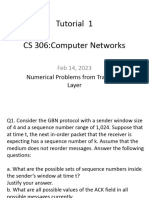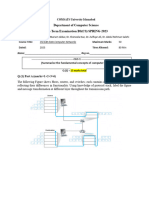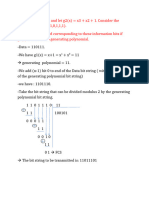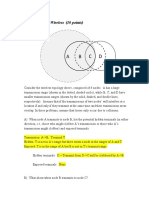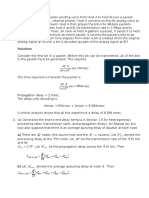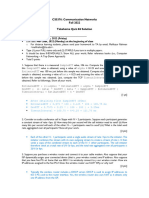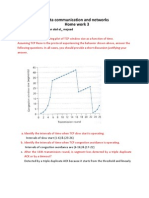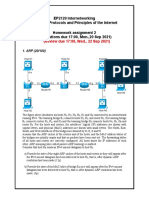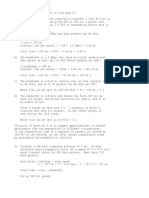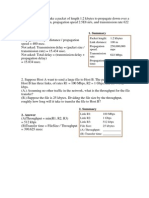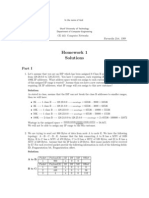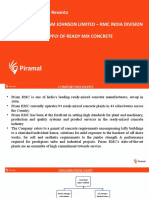0% found this document useful (0 votes)
162 views2 pagesWeek 6 Calculations
Using an exponential weighted moving average with a weight of 0.4, the estimated RTT for packet #4 is 26.4 ms. The size of the maximum segment size (MSS) for a mythical protocol with a maximum link layer frame of 751 bytes, network header of 24 bytes, and transport header of 5 bytes is 722 bytes. Given an effective delay of 64 ms at 40% network usage, the effective delay at 82% network usage is 213.3 ms. When sharing a 1 Gbps link, Application C should receive 185.2 Mbps of bandwidth based on TCP fairness during times all connections are transmitting.
Uploaded by
jumpman006Copyright
© © All Rights Reserved
We take content rights seriously. If you suspect this is your content, claim it here.
Available Formats
Download as PDF, TXT or read online on Scribd
0% found this document useful (0 votes)
162 views2 pagesWeek 6 Calculations
Using an exponential weighted moving average with a weight of 0.4, the estimated RTT for packet #4 is 26.4 ms. The size of the maximum segment size (MSS) for a mythical protocol with a maximum link layer frame of 751 bytes, network header of 24 bytes, and transport header of 5 bytes is 722 bytes. Given an effective delay of 64 ms at 40% network usage, the effective delay at 82% network usage is 213.3 ms. When sharing a 1 Gbps link, Application C should receive 185.2 Mbps of bandwidth based on TCP fairness during times all connections are transmitting.
Uploaded by
jumpman006Copyright
© © All Rights Reserved
We take content rights seriously. If you suspect this is your content, claim it here.
Available Formats
Download as PDF, TXT or read online on Scribd
/ 2
